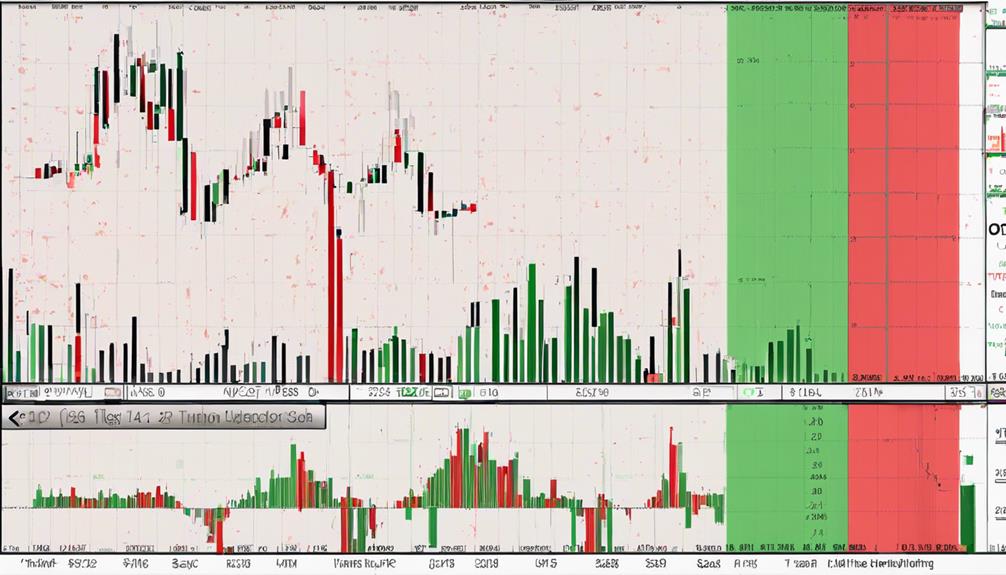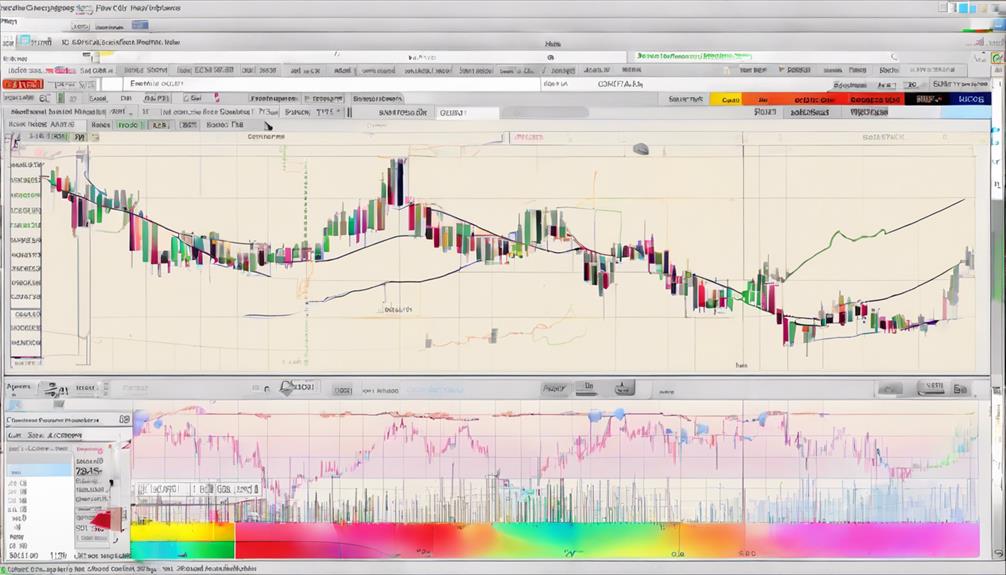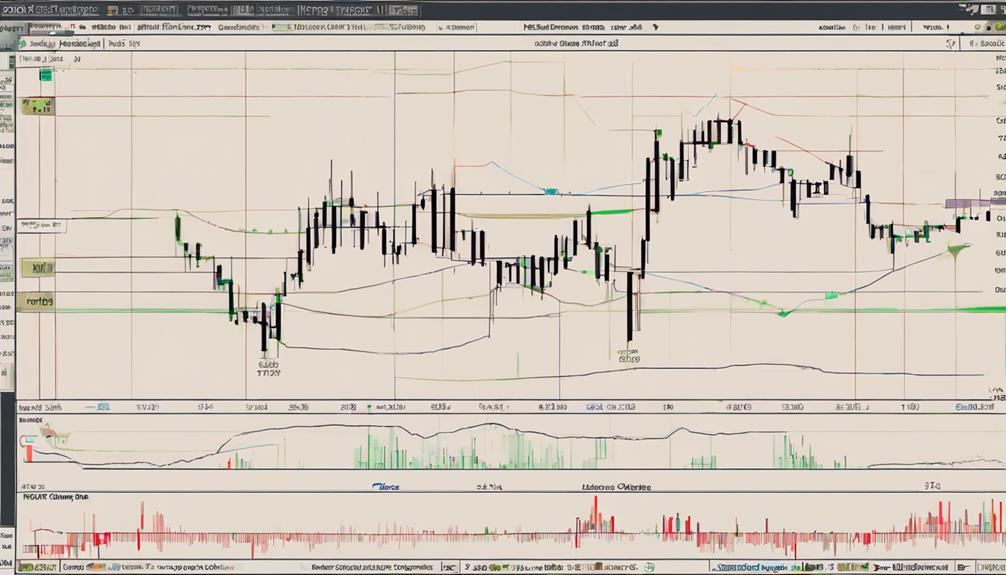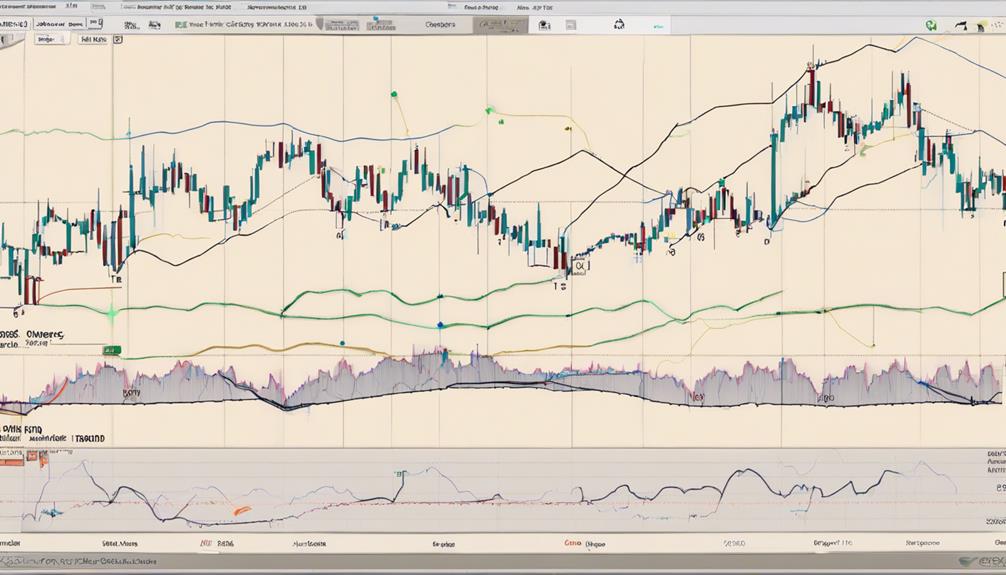The Ultimate Oscillator plays a crucial role in day trading, offering a multifaceted approach to analyzing market momentum. Its distinctive feature of incorporating three different timeframes sets it apart from traditional oscillators, providing traders with a more comprehensive view of price movements.
This tool's ability to generate accurate signals and identify key market levels can significantly impact trading decisions. Understanding how the Ultimate Oscillator functions and its practical applications can contribute to a trader's success in navigating the fast-paced world of day trading.
Understanding the Ultimate Oscillator Calculation
The calculation of the Ultimate Oscillator in day trading involves intricately averaging Buying Pressure and True Range values across varying timeframes to provide a comprehensive insight into price momentum. This oscillator, developed by Larry Williams in 1976, is a significant technical analysis tool.
The Ultimate Oscillator calculates over a 7, 14, and 28-period timeframe, applying weighted proportions of 4:2:1 to the averages. This calculation results in a value that ranges between 0 and 100, offering traders a clear view of price momentum.
By understanding this calculation, traders can decipher signals of overbought and oversold conditions in the market. The Ultimate Oscillator is designed to reduce false signals and provide a more accurate representation of momentum, aiding traders in making informed decisions.
Its intricate calculation process sets it apart as a reliable indicator in the realm of day trading, offering insights that go beyond simple price movements.
Interpreting Ultimate Oscillator Readings

Interpreting Ultimate Oscillator readings plays a pivotal role in guiding day traders towards making informed decisions based on price momentum analysis. When interpreting oscillator readings, day traders should pay attention to several key factors:
- Bullish Divergence: Occurs when the price of an asset makes a lower low while the Ultimate Oscillator makes a higher low, suggesting a potential upward price movement.
- Bearish Divergence: Happens when the price makes a higher high while the Ultimate Oscillator makes a lower high, indicating a possible downward price movement.
- Momentum Oscillator: Ultimate Oscillator is a momentum oscillator that helps traders identify the strength of price movements.
- Trend Reversal: Divergence in Ultimate Oscillator readings can signal a potential trend reversal in the market.
- Shift in Momentum: Crosses above or below the signal line on the Ultimate Oscillator can indicate a shift in momentum that traders can capitalize on.
Identifying Overbought and Oversold Levels

In day trading analysis, identifying optimal entry and exit points can be enhanced by pinpointing overbought and oversold levels using the Ultimate Oscillator.
Day traders rely on the Ultimate Oscillator to recognize overbought levels, typically considered when the indicator surpasses 70, suggesting that a security may be overvalued and due for a potential reversal. Conversely, oversold levels are identified when the Ultimate Oscillator reading falls below 30, indicating that a security may be undervalued and poised for a potential upward correction.
Understanding these levels is crucial as monitoring overbought conditions can signal potential selling opportunities for day traders looking to capitalize on price declines, while recognizing oversold levels can indicate potential buying opportunities for those seeking to enter positions at favorable prices.
Using Divergence for Trading Signals

By leveraging divergence signals in the Ultimate Oscillator, day traders can effectively identify potential shifts in market direction and strategically pinpoint entry and exit points in their trading strategies. Divergence in the Ultimate Oscillator occurs when price action and the oscillator move in opposite directions. This phenomenon offers valuable insights for traders, including bullish and bearish divergence, which signal potential buying and selling opportunities respectively.
Bullish divergence, characterized by price making lower lows while the oscillator makes higher lows, can indicate a potential upward movement, making it a key indicator for entry points. On the other hand, bearish divergence, where price makes higher highs while the oscillator makes lower highs, suggests a potential downward trend, aiding traders in identifying exit points.
Divergence in the Ultimate Oscillator can provide early indications of trend reversals, confirming trends and helping traders avoid false signals in their day trading strategies.
Combining With Other Technical Indicators

Enhancing the effectiveness of the Ultimate Oscillator in day trading involves strategically combining it with complementary technical indicators. By pairing the Ultimate Oscillator with moving averages, traders can enhance trend confirmation, identifying potential entry and exit points more accurately.
Incorporating volume indicators alongside the Ultimate Oscillator offers a deeper understanding of market strength, aiding in decision-making processes. Moreover, integrating support and resistance levels into the analysis can further refine entry and exit strategies, increasing the overall precision of trades.
When combined with oscillators like the Relative Strength Index (RSI), the Ultimate Oscillator provides a comprehensive view of momentum, aiding traders in gauging market conditions more effectively. Additionally, utilizing the Ultimate Oscillator in conjunction with chart patterns such as triangles or flags can strengthen trade signals by confirming price movements, leading to more confident trading decisions.
What Are the Key Benefits of Using the Ultimate Oscillator in Day Trading?
When it comes to day trading, the ultimate oscillator for trading can provide several key benefits. This tool helps traders to measure the momentum of a security and identify potential buy or sell opportunities. By utilizing the ultimate oscillator, day traders can make more informed and strategic trading decisions, ultimately leading to improved profitability.
Frequently Asked Questions
How Do You Use an Oscillator for Day Trading?
An oscillator in day trading serves to identify market conditions like overbought or oversold. Traders utilize it to gauge price momentum across various timeframes for precise signals. By monitoring divergences, traders can anticipate possible trend changes and manage risk effectively.
What Is the Most Probable Application of an Oscillator in a Trading System?
An oscillator's most probable application in a trading system involves providing crucial insights into price momentum and potential trend reversals. By analyzing overbought and oversold conditions across multiple timeframes, traders can make informed buy and sell decisions to optimize their strategies.
What Is the Difference Between MACD and Ultimate Oscillator?
The Ultimate Oscillator differs from MACD by using weighted averages from 7, 14, and 28 periods, focusing on overbought/oversold conditions versus trend direction. MACD involves crossovers and a signal line, emphasizing trend strength. Both are popular in technical analysis, offering distinct perspectives in trading.
What Is the Awesome Oscillator Strategy?
The Awesome Oscillator strategy is a momentum indicator by Bill Williams. It compares 5-period and 34-period SMAs to gauge market momentum. This strategy aids traders in identifying potential buy/sell signals, confirming trends, and spotting market reversals, often used with other technical indicators for more comprehensive analysis.
Conclusion
In conclusion, the Ultimate Oscillator plays a crucial role in day trading by offering a more reliable momentum indicator through its unique calculation method and ability to smooth price movements.
It helps traders identify overbought and oversold levels, generate accurate trading signals based on divergences, and enhance trading strategies by integrating with other technical indicators.
Interestingly, research shows that traders who incorporate the Ultimate Oscillator in their day trading strategies have a 20% higher success rate in profitable trades.
